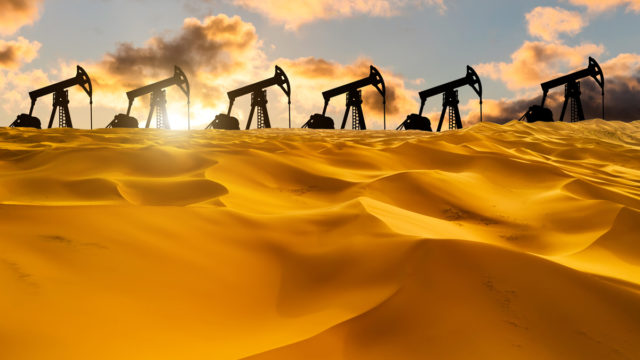For a long time, it seemed like the world’s thirst for crude oil would not end with demand doubling over the past 50 years to about 100 million barrels per day (MMbbl/d) in 2019 and peak demand expected at some nebulous point in the future.
That was all before the growing concern about carbon emissions sparked the electric vehicle revolution and the travel restrictions put in place to check the spread of the COVID 19 pandemic slashed oil demand.
These factors have led Norwegian energy intelligence firm Rystad Energy to forecast that oil demand will peak at 102MMbbl/d by 2028 in its ‘Governmental Targets Scenario’, which is expected to be the most likely of the three scenarios developed for its long-term oil demand prognosis.
By contrast, Rystad had called for peak oil demand to reach just over 106MMbbl/d in 2030 prior to the COVID-19 pandemic.
It added the persistence of the COVID-19 pandemic is likely to cause 2020 oil demand to decline to 89.3MMbbl/d – compared to 99.6MMbbl/d in 2019 – before recovering to 94.8MMbbl/d in 2021 as airlines continue to operate below pre-virus levels.
“The slow recovery will permanently affect global oil demand levels, shaving at least 2.5 million bpd off our forecasts made before the coronavirus,” Rystad senior oil markets analyst Artyom Tchen said.
“We have lost at least two years of oil demand growth in 2020 and 2021, while before the virus we expected yearly growth of 1 million bpd.
“The lockdowns will stunt economic recovery in the short-term and in the long-term and the pandemic will also leave behind a legacy of behavioural changes that will also affect oil use.”
Stockhead’s resident energy expert Peter Strachan concurs, noting that oil demand fell from 101Mmbbl/d in 2019 to 81MMbbl/d in April, though it has probably recovered to about 91MMbbl/d now.
“The pandemic is likely to keep oil demand below 101MMbbl/d for a couple of years,” he added.
The market intelligence firm noted that while months would be needed to fully assess how the pandemic has reshaped peoples’ habits and companies’ business models, it has already observed slower rush-hour traffic recovery in summer, an indication that some commuters would continue working from home even after lockdowns are lifted.
Cost cutting policies and teleconferencing may also cap aviation business travel recovery while some leisure travellers are also expected to abstain from airborne travel in the first years after the pandemic.
Oil demand plateau
Rystad expects that between 2025 and 2030, oil demand will enter a plateau phase at around 102MMbbl/d with no residual COVID 19 impacts.
Demand growth from Asia and Africa is expected to offset a continued structural decline in the power, industry and buildings sectors.
The acceleration in electric vehicle adoption and recycled plastic use is expected to characterise the post-peak phase between 2030 and 2050.
This is expected to see oil demand decline to 62MMbbl/d by 2050.
“Overall, we do not believe COVID-19 has put peak oil demand behind us, but we do acknowledge the pandemic will greatly alter the peak oil demand reckoning moment, both in terms of timing and volumes,” Tchen added.
“This will help oil substitution gain speed and inevitably take global consumption to lower levels quicker, hand in hand with the energy transition.”
Peak oil impact
Strachan believes the lower oil demand and resulting choke on oil prices will restrict investment in exploration and development as the industry focuses spending on existing production assets.
“Most exploration going on today is activity that was planned last year. I doubt that there will be much capital directed to exploration through 2021,” he added.
“Tightening oil supply and demand market into 2022 is likely to lift oil price back to a level that is profitable for companies to develop new fields and even to go exploring.
“An oil price of over US$60 to US$65/bbl will be required to motivate capital towards new projects, like STO/CVN’s Dorado oil and gas project.”
Strachan believes that industry is now too capital intensive for junior oil companies and that stock markets are unlikely to be as accommodating for funding as in the past.
“Companies will merge and sell assets as we have seen with Horizon’s sale of PNG assets and Senex’s sale of Cooper Basin west flank oil assets,” he explained.
“However, those remaining oil developers and producers should see profitable operations for decades with higher prices but limited competition as external funding dries up.”
You might be interested in











